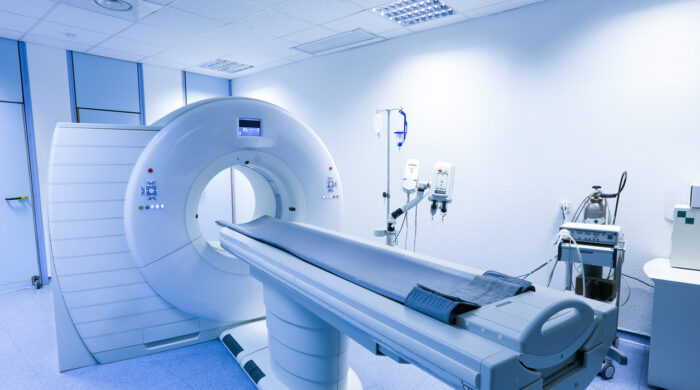In the past, the most common way to detect lung cancer in a patient was to administer a traditional chest CT scan, which would identify cancers the size of a dime or larger and take up to 15 minutes. Now, there is a faster, more precise way of finding cancer using less radiation via what’s called a Low-Dose Lung Cancer Screening.
What is a Low-Dose CT Scan?
A Low-Dose Computed Tomography Scan (LDCT) differs from a traditional chest X-ray. It is sometimes referred to as a helical CT scan or a low-dose spiral.
LDCT is a newer form of scanning that rotates continuously to take 3D imaging of the lungs, moving in a spiral motion around the patient’s body as it captures the imagery. Computer software processes this data to formulate cross-sectional images of the body, which are then shown on a monitor for the experts to capture and study.
The reason it’s called a “low-dose” CT scan is because it utilizes significantly less ionizing radiation than the traditional chest CT scan that has been in use for decades.
How is LDCT used for lung cancer screenings?
To perform the exam, the technologist will position the patient on the table, most likely wearing only a hospital gown, typically lying down completely still. The patient will be signaled to raise their arms over their head as the table advances through the machine and to hold their breath for a few seconds as the actual as the actual CT scan happens. It’s a very fast procedure and more time is actually spent preparing for it than doing it.
Those who suffer from claustrophobia may also be relieved to know that both ends of the scanning machine are open for the duration of the procedure and the technologist performing the exam can see and hear the patient at all times.
How is an LDCT Scan superior to other types of screenings?
Aside from the reduced amount of radiation used in the test, LDCT is a much faster procedure, taking less than five minutes vs. the 15 minutes that a regular chest CT scan would take. Furthermore, because the test produces so many cross-sectional images from inside the body and utilizes additional computer diagnosis, it provides a vaster look into possible cancers.
For example, an LDCT scan can identify cancer the size of a rice grain, whereas a traditional X-ray could only detect larger formations. This means that cancer can be caught when it’s smaller, earlier in its growth, giving it less of a chance to spread if treatment begins sooner.
In addition, the painless, non-invasive low-dose CT scans use no dyes and doesn’t require the patient to swallow or be injected with anything.
Who should be screened with an LDCT scan?
The LDCT scan is ideal for those who have the following risk factors for lung cancer:
- Current smokers, age 55-80
- Those who have quit smoking within the last 15 years, age 55 – 80
- Smokers who have a history of smoking a minimum of one pack of cigarettes a day for at least 30 years
- Smokers or non-smokers who have a family history of lung cancer
Consult a Professional
If you know you are at risk of getting lung cancer, the first step you should take is to speak with your primary care provider. They will discuss your concerns and any symptoms you may be having, and refer you to a Pulmonologist and/or our Imaging Center for screening. Request an appointment with us today to get the answers you need.
